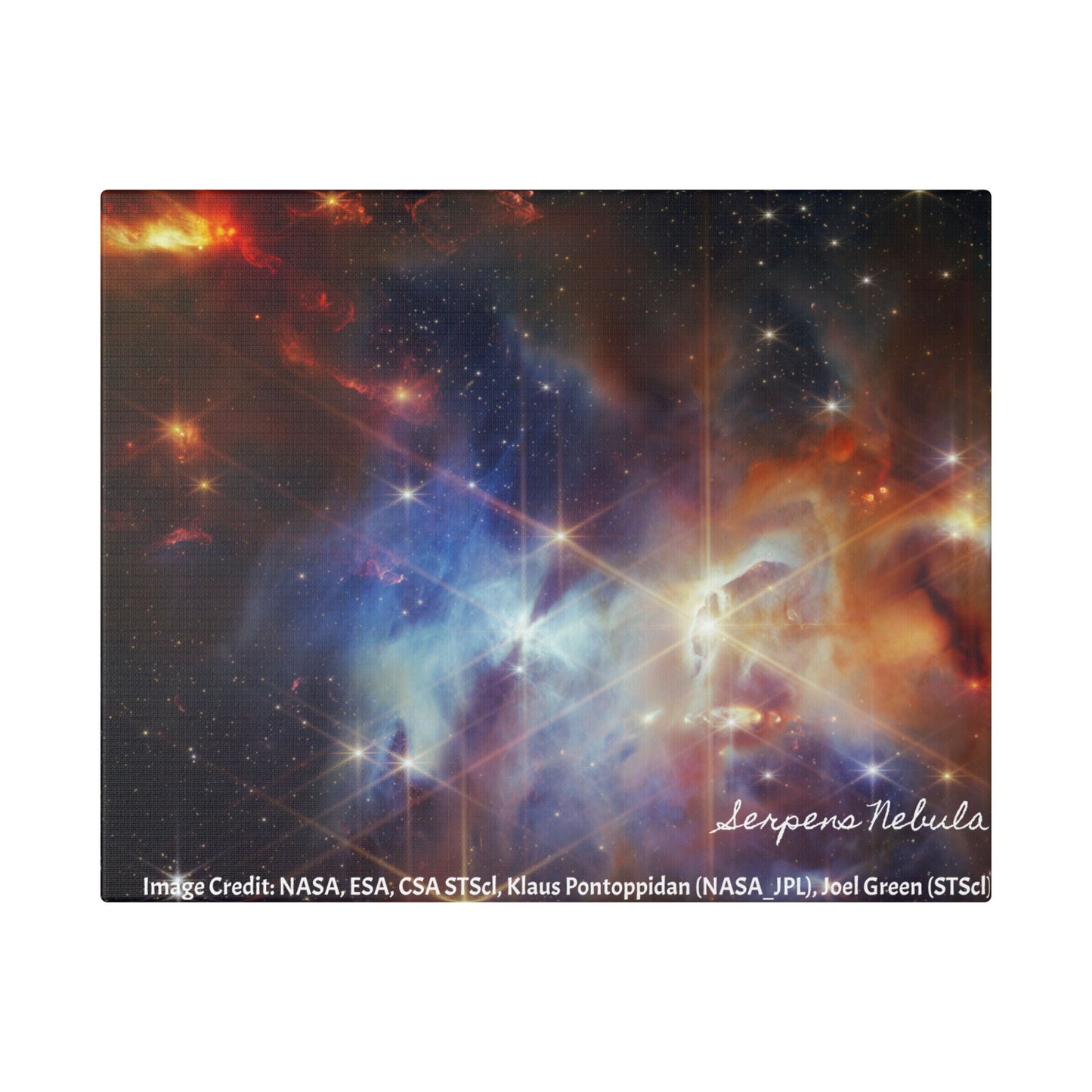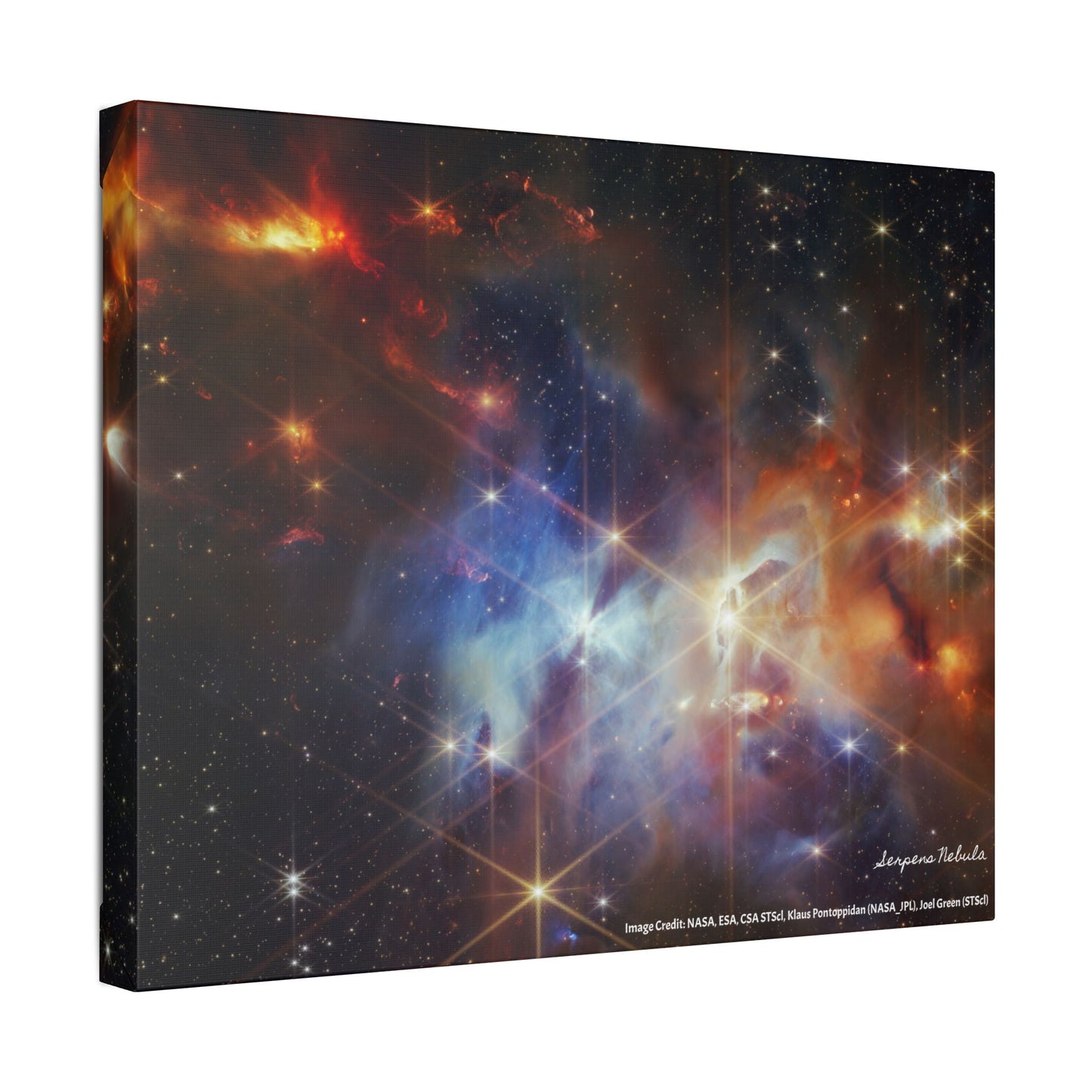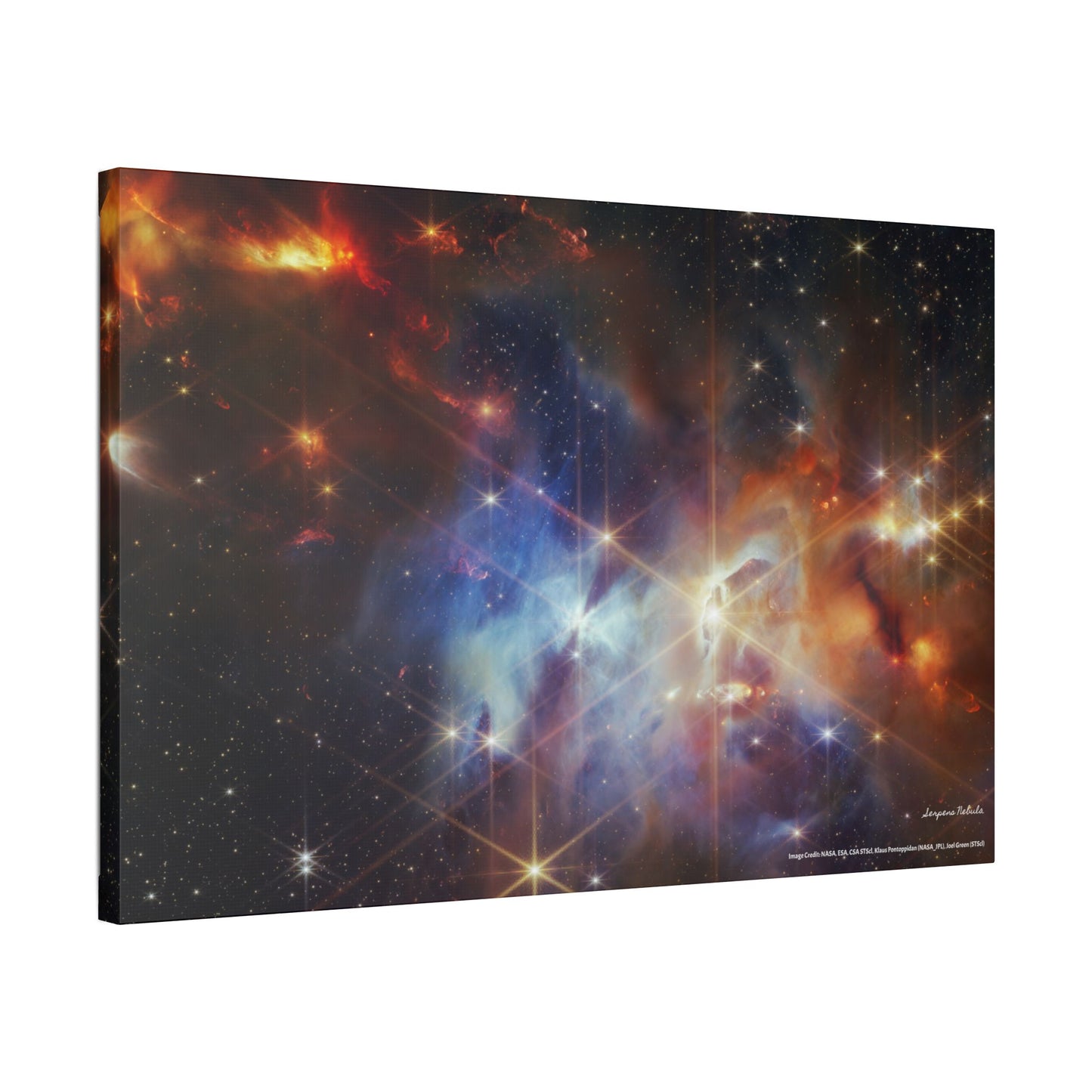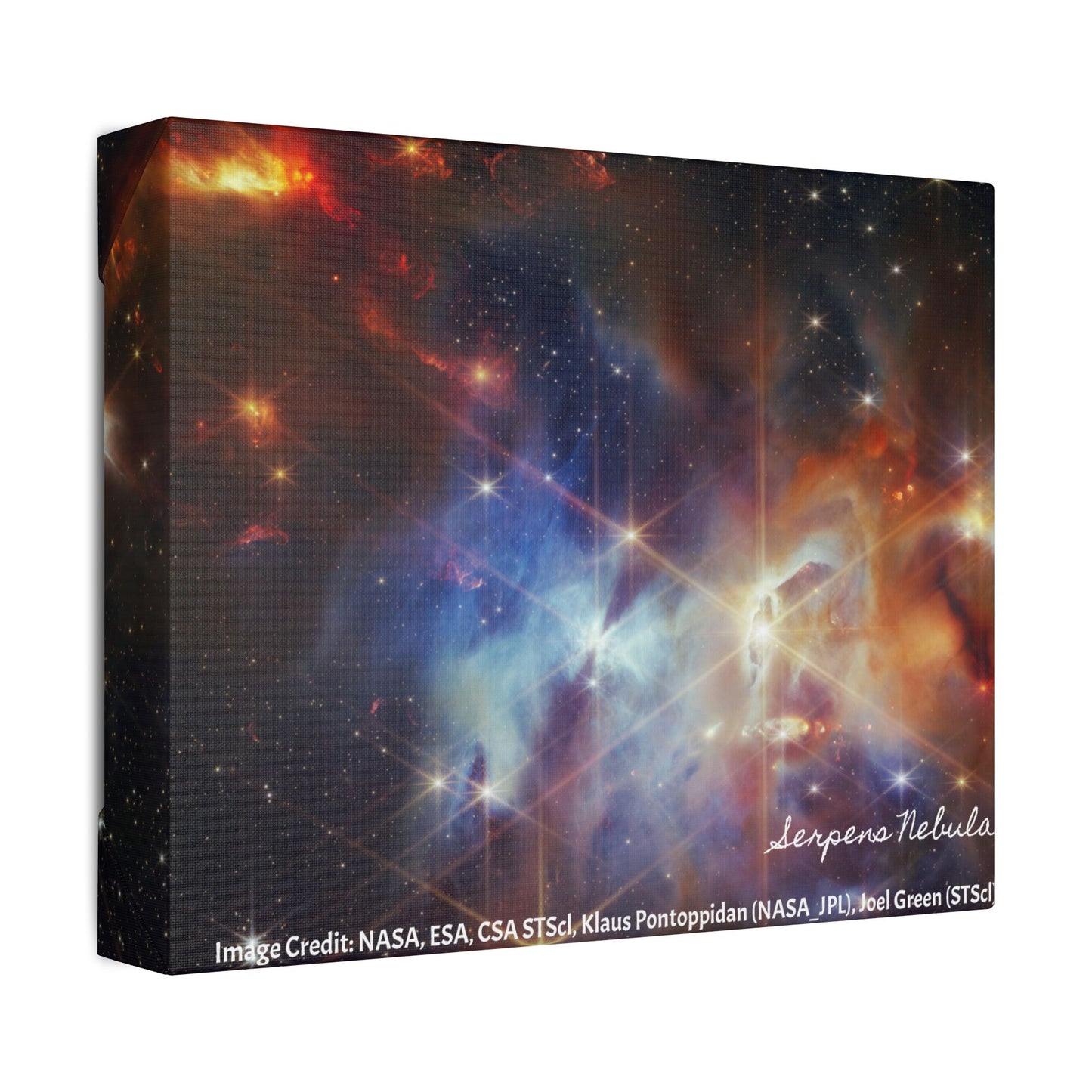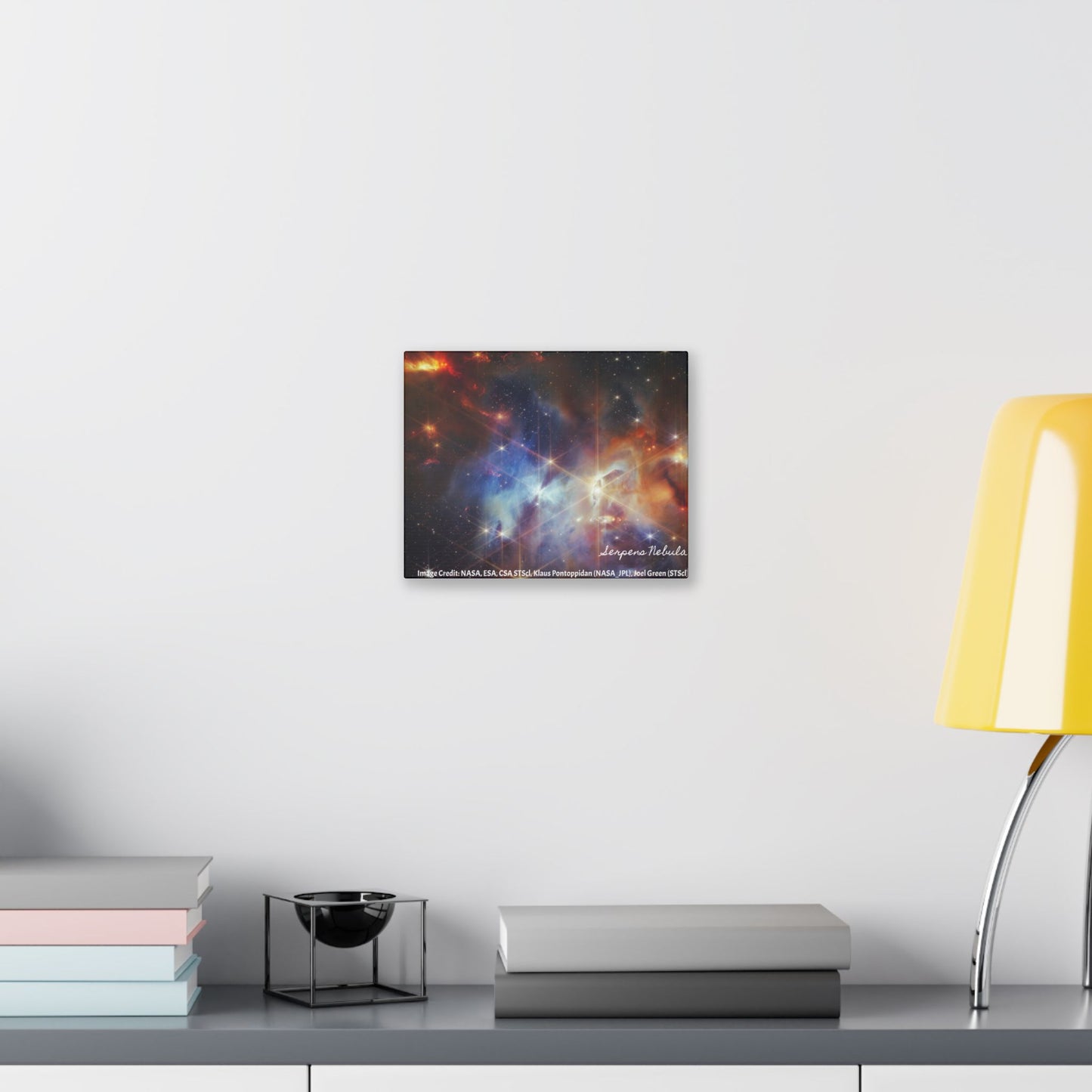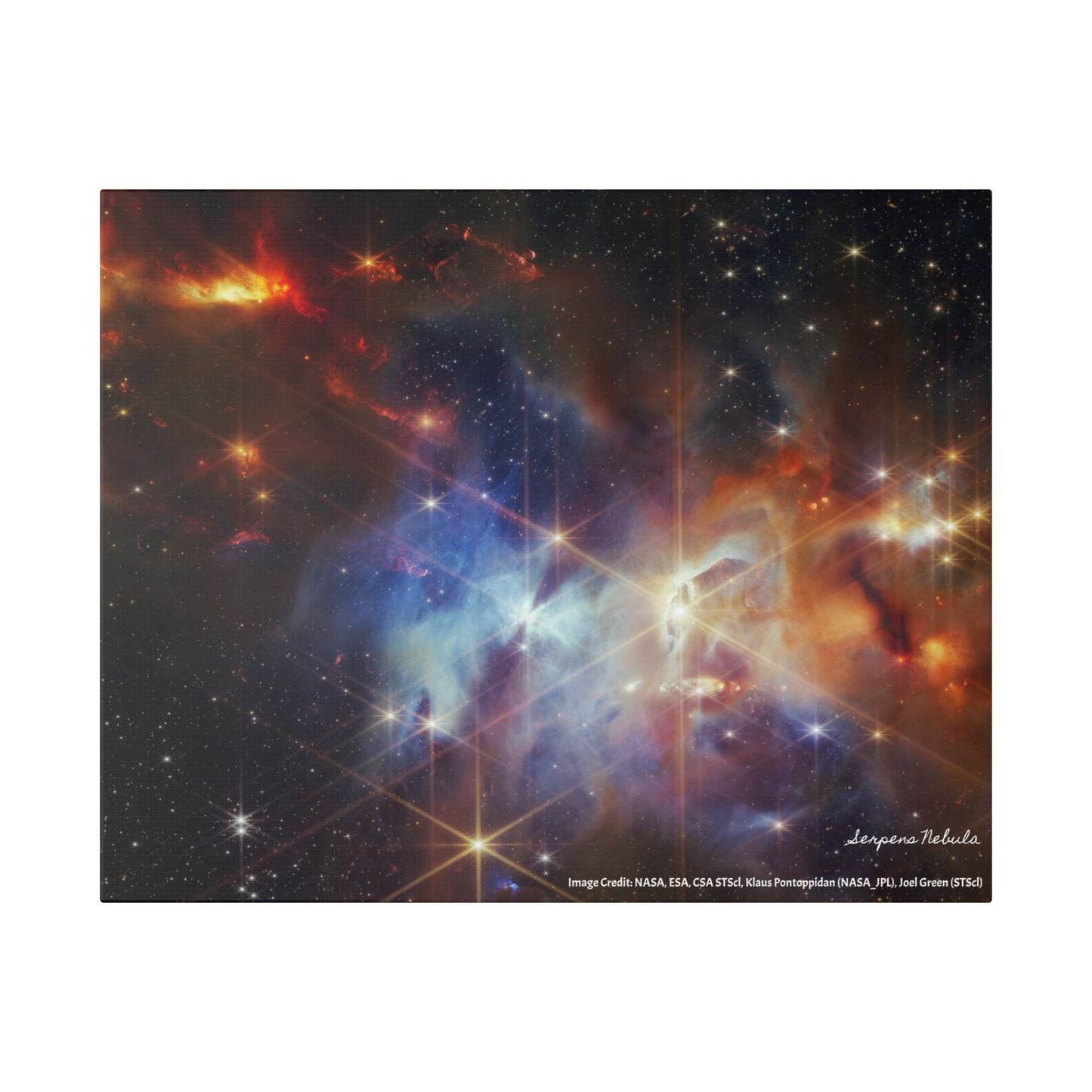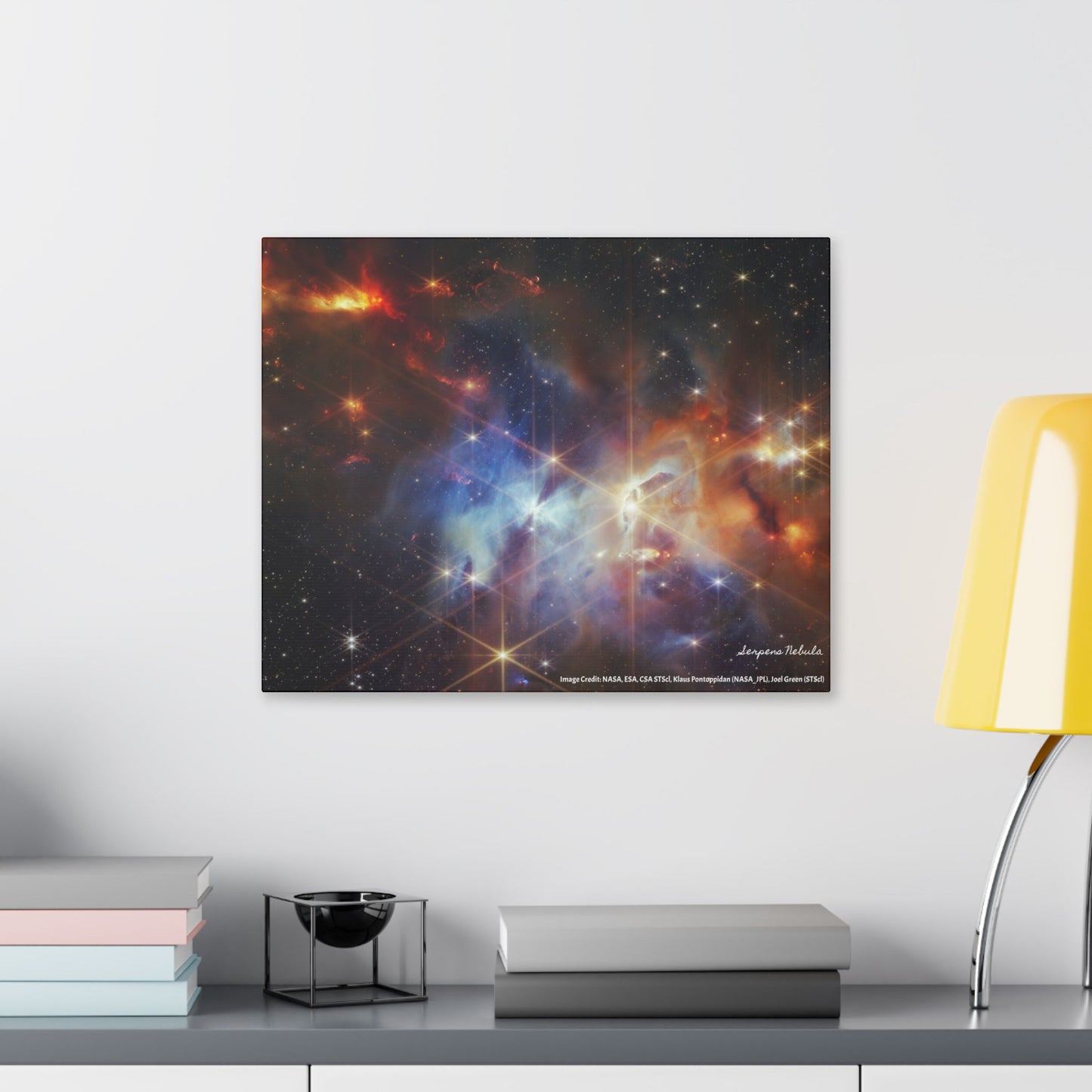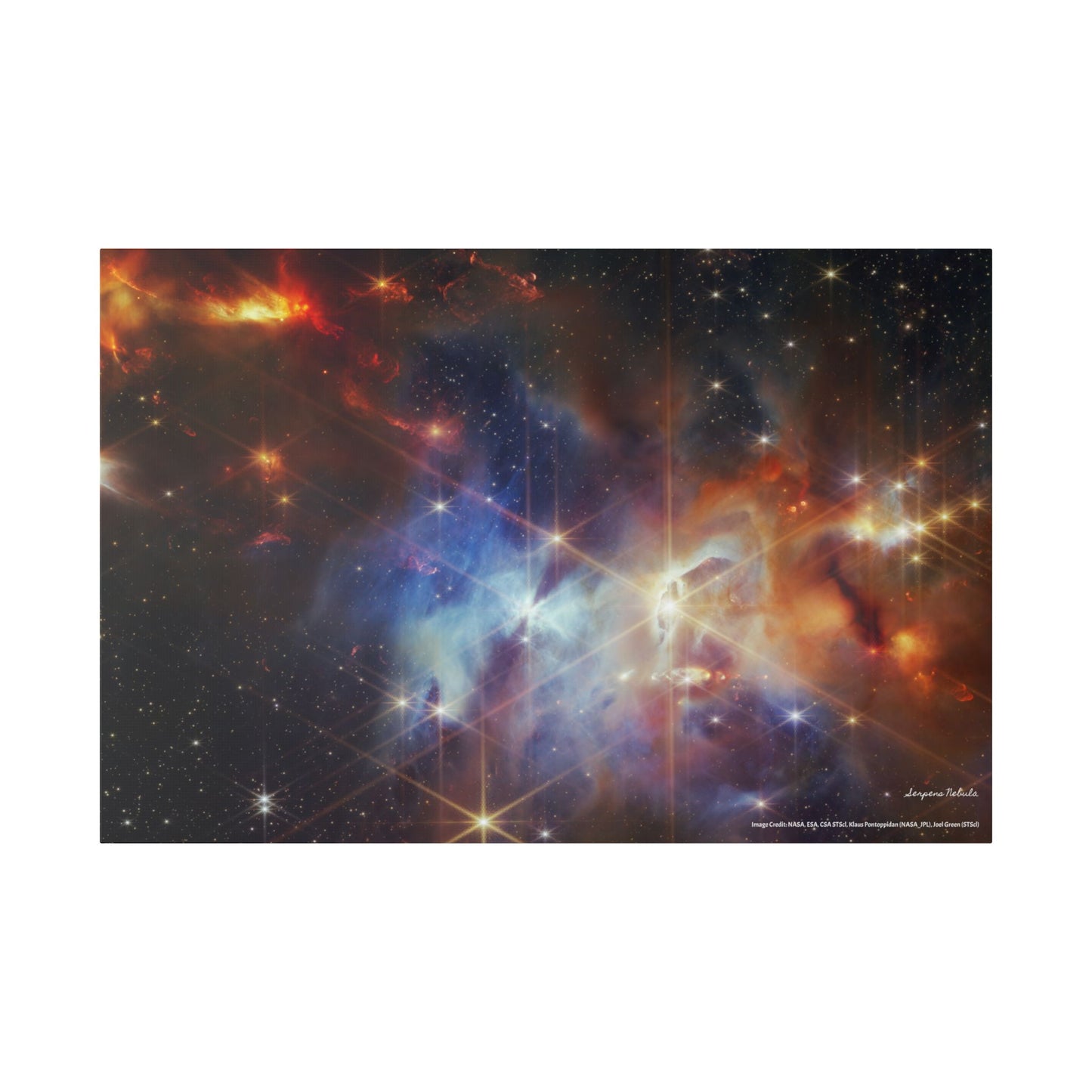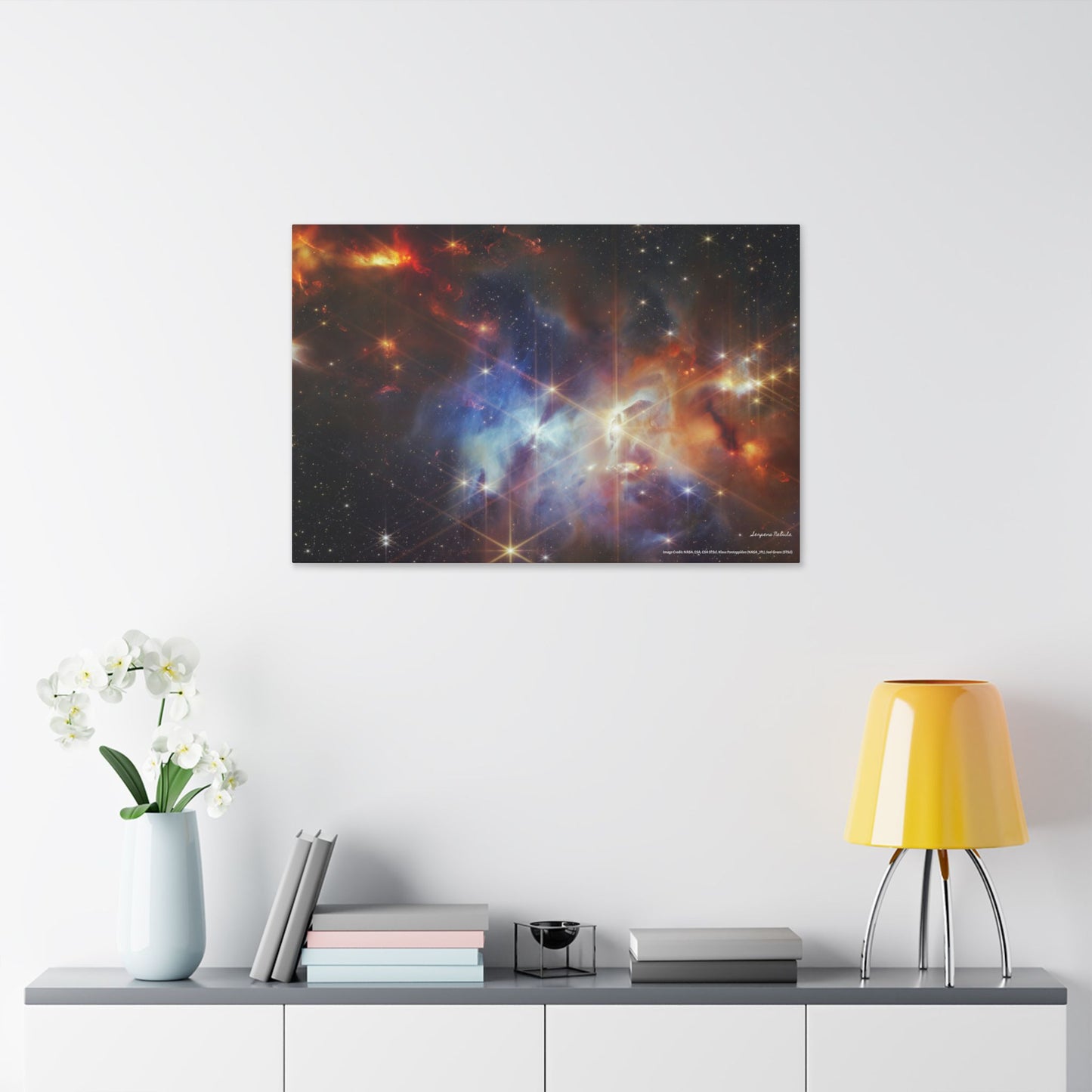Serpens Nebula, Canvas Wall Art
Serpens Nebula, Canvas Wall Art
Couldn't load pickup availability
Elevate Your Space with Quality Canvas Art
Transform your home or office into a sophisticated haven with our stunning collection of canvas art prints. Each piece is meticulously crafted using top-tier materials and cutting-edge printing techniques to deliver exceptional clarity, detail, and vibrancy.
Please note that these canvas art prints are created for exquisite indoor display.
Invest in lasting beauty. Shop for our canvas art collection today.
Serpens Nebula:
In this image of the Serpens Nebula from the Near-Infrared Camera (NIRCam) on NASA’s James Webb Space Telescope, astronomers found a grouping of aligned protostellar outflows within one small region (the top left corner). In the Webb image, these jets are indicated by bright, clumpy streaks that appear red, which are shockwaves from the jet impacting the surrounding gas and dust.
The Serpens Nebula, located 1,300 light-years from Earth, is home to a particularly dense cluster of newly forming stars (~100,000 years old), some of which will eventually grow to the mass of our Sun.
This region has been home to other coincidental discoveries, including the flapping “Bat Shadow,” which earned its name when 2020 data from NASA’s Hubble Space Telescope revealed a shadow from a star’s planet-forming disk to flap, or shift. This feature is visible at the center of the Webb image.
To the right of the “Bat Shadow” lies another intriguing feature—an eye-shaped crevice, which appears as if a star is bursting through. However, astronomers say looks may be deceiving here. This could just be gases of different densities layered on top of one another, similar to what is seen in the famous Pillars of Creation.
And to the right of that, an extremely dark patch could be a similar occurrence. This gas and dust are so dense in comparison to the rest of the region that no near-infrared light is able to pass through.
Constellation Serpens
Distance 1,300 light-years
Dimensions Image is about 6.3 arcminutes across (1.8 light-years)
Exposure Dates 26 April 2023, 12 May 2023
Image: NASA, ESA, CSA, STScI, Klaus Pontoppidan (NASA-JPL), Joel Green (STScI)
Share
